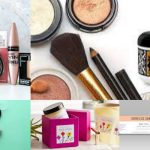Kids Makeup for Eczema Prone Skin should be gentle, joyful, and super-simple—so little faces feel comfy, parents feel confident, makeup artists feel prepared, and brand influencers create content families love. This guide focuses on fragrance-free, hypoallergenic picks, tidy routines, and smart habits that protect the skin barrier while still delivering cute color and camera-ready sparkle. You’ll learn what to look for on labels, which textures tend to be kinder, and how to set up easy routines that kids love to follow.
Eczema (atopic dermatitis) means the skin barrier is extra sensitive. The secret to happy Kids Makeup for Eczema Prone Skin is less product, fewer ingredients, and more moisture. Think balm over liquid, sticks over loose powders, and soft tones over heavy layers. In this article, you’ll find an ingredient checklist, an age-friendly routine, hygiene moves that artists love, and content tips influencers can share with their audience. Nothing here replaces medical advice—if a flare is active or the skin is broken, skip makeup and check in with a pediatric dermatologist.
Kids Makeup for Eczema Prone Skin: Fragrance Free and Hypoallergenic Picks
What makes eczema-kind makeup different?
When planning Kids Makeup for Eczema Prone Skin, the goal isn’t “more coverage”—it’s comfort. Choose formulas that respect the barrier and avoid common triggers.
Barrier-friendly priorities kids (and parents) love
- Fragrance-free and hypoallergenic: Skip perfumes, essential oils, and strong scents.
- Minimal ingredient lists: Fewer extras = fewer potential irritants.
- Creamy, emollient textures: Sticks and balms glide without tugging; pressed (not loose) powders reduce airborne particles.
- Dye & glitter caution: Prefer soft mineral tints; avoid chunky craft glitter near eyes.
- Remove easily: Gentle micellar water or non-foaming cleansers reduce friction.
Read Also: Kids Makeup Storage and Expiration: How Long Products Really Last
Skincare prep before any color
A calm base makes everything easier. For Kids Makeup for Eczema Prone Skin, think of makeup as the final 5% of the routine—most of the magic is in prep.
- Cleanse gently: Use a mild, fragrance-free cleanser or micellar water on a cotton round.
- Moisturize generously: Barrier-supporting creams with ceramides, glycerin, or petrolatum are classics families love.
- (Daytime) SPF: If outdoors, consider a mineral sunscreen (zinc oxide or titanium dioxide) that’s fragrance-free.
- Wait 10–15 minutes: Let moisturizer settle; makeup sits better and feels better.
- Patch test new items: Try a small swipe on the inner forearm or behind the ear 24 hours before an event.
If skin is cracked, weeping, or very inflamed, skip makeup entirely and pause for healing.
Read Also: Kids Makeup Party Ideas: At Home Stations, Hygiene and Game Plans
Product formats that play nice with sensitive skin
You don’t need a big kit. For Kids Makeup for Eczema Prone Skin, three or four friendly items are plenty—and kids love how quick it is.
- Tinted balm or sheer stick tint (lips & cheeks): One swipe, zero sting, easy to remove.
- Cream blush stick (fragrance-free): Dab, tap, done.
- Pressed finishing powder (optional): A light press on T-zone only; avoid overdrying patches.
- Cream eyeshadow stick (eye-safe, fragrance-free): Choose soft champagne, peach, or taupe—no fallout.
- Clear brow gel (fragrance-free): Tidy brows with zero pigment for a neat, cute finish.
- Washable mini mascara (optional for older kids): Only if eyes are calm and parents approve—skip during flares.
Skip or limit: loose powders (dusty), heavy long-wear liquids (can be drying), strong glitter adhesives (potential irritants), fragranced anything.
Read Also: Kids Makeup Travel Kit Checklist: Mess Free Essentials for Vacations
Ingredient cheat sheet: “Yes, please” vs “Maybe not”
When shopping Kids Makeup for Eczema Prone Skin, labels are your besties.
Often better tolerated (check each child’s needs)
- Ceramides, glycerin, squalane, petrolatum
- Mineral pigments and physical UV filters (zinc oxide, titanium dioxide)
- Short, simple ingredient lists; “fragrance-free,” “hypoallergenic,” “ophthalmologist tested”
Watch Also 5 Makeup Tips For Dry/ Eczema Skin
Common culprits to avoid (or patch test carefully)
- Added fragrance/parfum, essential oils, menthol, peppermint
- Certain preservatives (e.g., methylisothiazolinone/MI, MCI) in leave-on products
- Formaldehyde-releasing preservatives (e.g., DMDM hydantoin)
- High-alcohol, stingy gels; harsh exfoliating acids in kids’ products
- Craft glitter or adhesives not rated for face/eye use
Everyone’s different—always patch test.
Read Also: Kids Makeup for Church and Family Events: Soft Elegant Ideas
The five-minute routine kids love
This simple flow keeps Kids Makeup for Eczema Prone Skin comfy and cute.
- Moisturizer first (and SPF if going outside).
- Cheeks: Tap a fragrance-free cream blush stick high on the apples; blend with ring finger.
- Eyes: Swipe a tiny bit of cream shadow stick; blend quickly to avoid rubbing.
- Brows: Brush through with a fragrance-free clear gel.
- Lips: Tinted balm—one coat is plenty.
- Optional: Press a touch of translucent powder where shiny (not over dry patches).
Total: 3–5 minutes, zero fuss, big smiles.
Read Also: Kids Makeup for Sports Events: Sweat Proof but Gentle Options
Hygiene and storage (because clean = calm)
Hygiene is a love language for sensitive skin—especially with Kids Makeup for Eczema Prone Skin.
- Clean hands first. Always.
- Use disposables for gloss wands or decant onto a clean palette.
- Sharpen pencils lightly before use to refresh the tip.
- Wipe sticks with a tissue after use; cap immediately.
- Store cool, dry, and dark; avoid steamy bathrooms.
- Rotate frequently: If the scent, color, or texture changes, toss it—especially eye products.
Party days, photo days, and brand-safe content
Makeup artists and influencers can make Kids Makeup for Eczema Prone Skin feel inclusive and fun by spotlighting safety.
- On-camera tip reels: “3 eczema-kind swaps”—balm for gloss, stick for liquid, pressed for loose.
- Caption clarity: “Fragrance-free, hypoallergenic, patch-tested” builds trust parents love.
- Model consent: Keep shots on hands/arms if families prefer privacy.
- Skip heavy looks: Celebrate glow, not layers.
Read Also: Kids Makeup for Stage Performances: Long Wear Tips for School Plays
Troubleshooting: what if there’s a tingle?
If a product stings, remove it right away with a gentle cleanser or micellar water and re-moisturize. For persistent redness or flares, pause makeup and consult a pediatric dermatologist. With Kids Makeup for Eczema Prone Skin, comfort always wins over coverage.
FAQs:
What’s the #1 rule for Kids Makeup for Eczema Prone Skin?
Fragrance-free, hypoallergenic formulas plus rich moisturizer underneath. Comfort first, color second.
Read Also: Kids Makeup Glitter Safety: Biodegradable Options Parents Should Know
Can my child wear makeup during an eczema flare?
It’s best to skip makeup on broken or actively inflamed skin. Focus on soothing moisturizer and medical guidance.
Which is gentler—powder or cream?
Cream sticks and balms usually feel kinder; pressed (not loose) powders are okay in tiny amounts away from dry patches.
Read Also: Kids Makeup with SPF: Sun Safe Tinted Balms and Cheek Sticks
Are mineral sunscreens better for sensitive kids?
Many families find zinc oxide/titanium dioxide more tolerable, but always patch test and follow your clinician’s advice.
Is “unscented” the same as “fragrance-free”?
No. “Unscented” can still include masking fragrances. Look specifically for “fragrance-free.”
Read Also: Kids Makeup vs Face Paint: What to Use When and Why
What lip product is safest for everyday?
A fragrance-free tinted balm layered over moisturizer. If any tingling or dryness appears, remove and switch.
How do I make eye looks safer?
Keep it simple: eye-safe cream shadow, clean fingers, and skip mascara during flares. Never use craft glitter near eyes.
Read Also: Kids Makeup Patch Test Guide: How to Check for Allergies
What’s a good patch-test method for Kids Makeup for Eczema Prone Skin?
Apply a small amount to the inner forearm or behind the ear and wait 24 hours. If no reaction, proceed gently on the face.
How do I sanitize without stinging?
Clean hands before application; wipe sticks with a tissue; sanitize tools (not skin) using brush cleaner; rinse thoroughly.
Read Also: Kids Makeup Ingredients to Avoid: Parabens, Phthalates, Fragrance Explained
Can boys with eczema wear fun makeup too?
Absolutely. Face crayons for sporty stripes, soft shimmer on lids, or tinted balm—keep it fragrance-free and gentle.
What if makeup collects on dry patches?
Pat a bit more moisturizer on the area, wait 5 minutes, then tap on minimal product. Avoid over-powdering.
Read Also: Kids Makeup Brushes and Tools: How to Clean and Sanitize at Home
How often should we replace products?
Mascara ~3 months, balms/sticks ~6–12 months after opening, pressed powders ~12–24 months. Toss sooner if smell or texture changes.
Conclusion
Comfort, clarity, and playful color can live together with Kids Makeup for Eczema Prone Skin. Start with rich moisturizer, pick fragrance-free and hypoallergenic sticks and balms, and keep routines quick so little hands don’t over-rub. Use pressed (not loose) powders sparingly, clean tools often, and patch test every new item. For artists and influencers, celebrate soft, barrier-friendly looks families love and be transparent about ingredients and hygiene. With these habits, Kids Makeup for Eczema Prone Skin becomes simple, joyful, and skin-smart—so every smile shines without the sting.
Read Also: Kids Makeup Removal Routine: Safe Cleansing and Aftercare for Young Skin



[…] Read Also: Kids Makeup for Eczema Prone Skin: Fragrance Free and Hypoallergenic Picks […]